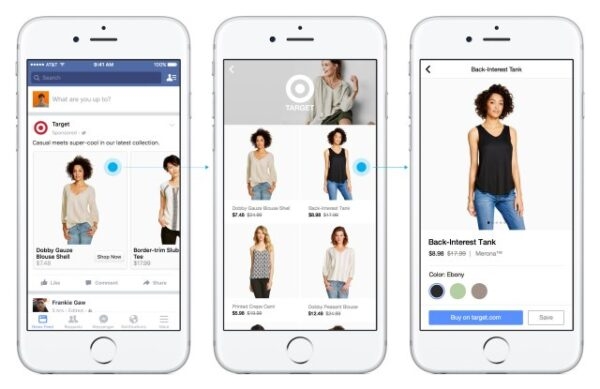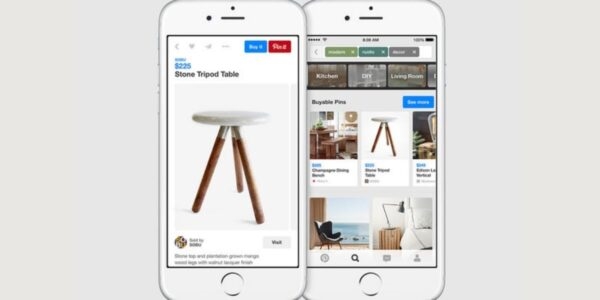Let me begin this with a cliché – The future of business is on the internet. We’re all out there shopping on Amazon and eBay for almost everything, and on thousand other eCommerce sites on the internet.
There are about 12 million – 24 million eCommerce sites across the entire globe. So yeah, pretty much everyone’s trying to get on the online selling trope. Tyler Durden might not be so happy to hear that (Watch Fight Club if you haven’t).

Anyway, you hear about eCommerce a lot. Everyone’s talking about Shopify, BigCommerce, and WooCommerce, but what you don’t get to hear a lot about is social commerce.
Now what is social commerce, you might ask?—Well, it’s the ability to purchase products from a third-party seller within the social media platform itself, and no, that’s not a brand new concept either.
In 2019, the retail social commerce sales in the USA were $ 19.42 Billion, and the top leaders in this space who are helping businesses like yours to be a part of social commerce are Facebook, Instagram, and Pinterest.
Oh and remember the Chinese app where the kids danced for like 15 seconds and got famous? That’s right—TikTok just recently partnered with Shopify and is soon going to go all-in on social selling.
You don’t need any statistics to understand why social commerce is going to work wonders since the compulsive human need to use social media and do shopping is well documented. Let’s look at what social media platforms you can use to sell your products.
Social Commerce Platforms to Capitalize On

Facebook’s social commerce ability has been around for quite a while. Initially, they were geared toward selling products, but now they’re even planning to help you sell your services as well.
The Facebook store comes with tools for promotion, sales, marketing, conversion, customer support, and so much more. If you’re a small or a medium-sized business, you can set up your store on Facebook for free.
Facebook has even partnered with third-party tools like Shopify, BigCommerce, WooCommerce, etc. Companies having their Facebook shop can even interact with their customers via the Facebook Messenger app. This will help you offer before and after-sales support to them.
Here’s what you can do with your Facebook social commerce store:-
- Upload products and their details.
- Manage and customize your product catalog.
- Sell from your Page directly.
- Manage your orders.
- Run a Facebook ad to promote your products.
- Get detailed insights.
Social commerce can make the purchase and sale process super simple and brings about a degree of familiarity between the buyer and the seller, something that Amazon or eBay can’t just because they aren’t social channels.
In the long run, you might want to find ways to reduce marketing costs since an average Facebook ad could cost you anywhere between $ 0.50 – $ 2.00 based on several parameters. However, you can always set a budget.
It’s been revealed by Facebook that about 70% of online shoppers turn to Instagram for discovering products. No wonder Zuckerboii rolled out the Instagram shopping feature for people to make purchases within Instagram itself.

As shown in the above image, there are 2 ways to make your product visible for purchase:-
- You can simply tap on a picture and see the tags reveal themselves, showing you how many products you can buy that are displayed in that picture.
- You can swipe on Instagram stories and you’ll occasionally come across a story that will ask you to swipe up to shop now.
The Instagram store feature is available in 70 countries, and is available to companies that:-
- Sell physical goods.
- Have an Instagram business account that’s connected to a Facebook page.
- Comply with Instagram’s commerce policies and merchant agreement.
With Instagram launching a chargeable in-app checkout feature (to only a limited number of merchants at the moment), it’s clear that they’re gearing towards making social commerce.

I’m assuming you don’t know how Pinterest works which is why I’ll give you a brief before I move ahead. It allows its users to post or “pin” pictures and videos that you see in your feed. These pins will create a virtual photo gallery called “board”.
Pinterest rolled out the option for buyable pins in 2015. There were only 30 million of those when it first came, but within 3 months, the number doubled to 60 million.
But you know what’s even crazier? The average order value on Pinterest is $ 50, which is the highest among all other social networks.
Pinterest is associated with various popular retailers like Wayfair, Nordstrom, Bloomingdales, etc. Another unique aspect of Pinterest is that only a small portion of the site’s content is original. The rest of its content is “repins”.
As an original content creator, this is a great opportunity for you, and since the entire platform is filled with visuals, I don’t need to tell you how important it is to invest in the pictures and videos of your product.
Why Does It Work?
Remember when back in the day, you used to go out with your friends and family to go shopping and decide what to buy? Well, shopping was inherently considered to be a social activity, and it resurfaced with social commerce.
eCommerce platforms are not only not social, but they add another step in the shopping process. If someone wants to buy something after looking at a photo of a product on Instagram, they don’t have to go on Amazon to look for it.
Here are some really subtle benefits that you have as a seller:-
- Smart Decision Making – When there’s enough data for you to understand what the end-user needs while online shopping, you can make smarter inventory and product development choices. You can even ask your audience to vote on the products they’d like to purchase.
- Virtual Word-of-Mouth – Since people don’t have to physically or orally propagate reviews of products and services while social shopping, it’s easier for you to increase the number of conversations taking place about your products and company.
- Effective Virtual Marketing – When someone likes a product, they might want to talk about it on social media—and If you’re doing social commerce, you can increase the market for your products, reach new customers you might not have otherwise.
- Better Research Possibilities – If you’ve done your research, you will have developed different archetypes of your target audience, which you can then use to improve product discovery & awareness, and personalize customer experience based on their preferences.
- Generate Social Proof – If virtual word-of-mouth is in action on a social media site, then you’re inevitably going to start seeing a rise in sales. And when that happens, you can encourage peer recommendations and reviews that help you create social proof.
Wrapping Up With Some Facts
If you’re still reading reviews online before buying your products, welp, you’re all grown up and wise, but slower too. Why? Because 44% of GenZ has made purchases based on recommendations of influencers, as opposed to 26% of the general population doing the same.
With 74% of shoppers making their purchase decisions based on social media, it becomes a no-brainer for buyers by not having to go on eCommerce platforms to find the product and for sellers to sell where the customers are rather than trying to lure them to your site.
All in all, the influence of social commerce is growing by the day and 2021 is a year with amazing opportunity since post covid, the global social media usage has only surged. Hopefully, you’ll utilize all this to your advantage.
Digital & Social Articles on Business 2 Community
(44)







